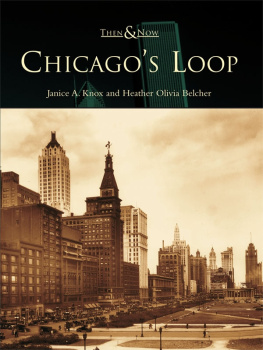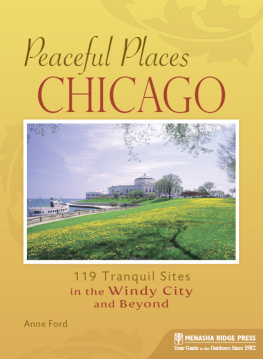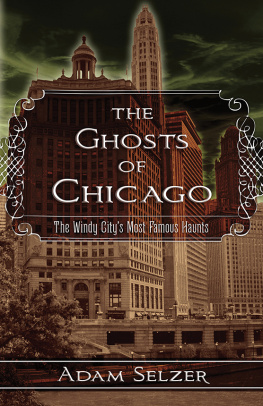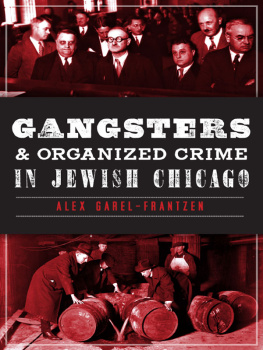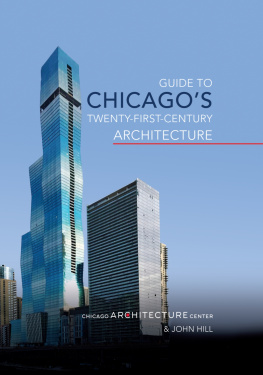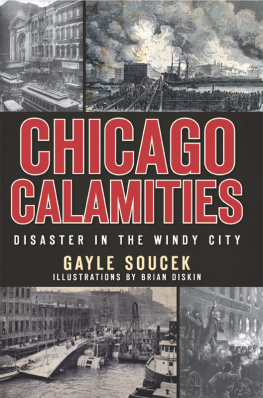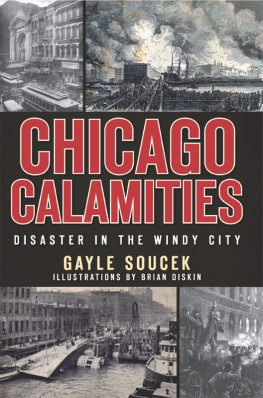Chicagos Most Wanted
Selected Titles in Potomac Books Most Wanted Series
Businesss Most Wanted by Jim Romeo
The 1950s Most Wanted by Robert Rodriguez
The 1960s Most Wanted by Stuart Shea
Rock and Rolls Most Wanted by Stuart Shea
Broadways Most Wanted by Tom Shea
Country Musics Most Wanted by Francesca Peppiatt
TVs Most Wanted by Douglas Tonks
Dogs Most Wanted by Alexandra Allred
Baseballs Most Wanted by Floyd Conner
Footballs Most Wanted by Floyd Conner
Chicagos Most Wanted
The Top 10 Book of Murderous Mobsters, Midway Monsters, and Windy City Oddities
Laura Enright

Copyright 2005 by Potomac Books, Inc.
Published in the United States by Potomac Books, Inc.
(formerly Brasseys, Inc.).
All rights reserved. No part of this book may be
reproduced in any manner whatsoever without
written permission from the publisher, except
in the case of brief quotations embodied in
critical articles and reviews.
Library of Congress Cataloging-in-Publication Data
Enright, Laura, 1964
Chicagos most wanted : the top 10 book of
murderous mobsters, midway monsters, and windy
city oddities / Laura Enright.
p. cm.(Most wanted)
Includes bibliographical references and index.
ISBN 1-57488-785-8 (pbk. : alk. paper)
1. City and town lifeIllinoisChicago
Miscellanea. 2. LegendsIllinoisChicago.
3. Chicago (Ill.)HistoryMiscellanea.
4. Chicago (Ill.)BiographyMiscellanea.
5. Chicago (Ill.)Social life and customs
Miscellanea. I. Title. II. Series.
F548.36.E57 2005
977.311040922dc22 2004027615
(alk. paper)
Printed in Canada on acid-free paper that
meets the American National Standards
Institute Z39-48 Standard.
Potomac Books, Inc.
22841 Quicksilver Drive
Dulles, Virginia 20166
First Edition
10 9 8 7 6 5 4 3 2 1
Contents
Illustrations
Acknowledgments
Iowe a huge debt of thanks to the ever-patient Don Jacobs and the folks at Potomac Books who gave me this chance and helped me along. And to Stu Shea who hooked me up with Potomac Books, as well as Diana Bucko who helped me with all the nitty gritty. And to my friends at the Park Ridge Library.
Id also like to thank Eric McCreary for being the greatest nephew an aunt could ask for.
Introduction
Chicago is a city that, when told it couldnt do something, went ahead and did it anyway. One of the most beautiful and powerful cities in the world was built on a swamp but never succumbed to it. In its early years, it was the fastest-growing city in the world, the prodigy of the Midwest outdoing its sibling cities, some of them even older than Chicago. Far from a toddling town, it was, and is, a charging town, meeting challenges head-on, losing big and winning bigger. It drew to it and eventually began to breed inspired thinkers whose inventions, innovations, and philosophies helped it plow forward against all odds. What one comes away with when reading about Chicago is its sense of duality: State Street finesse bleeding into Stockyard brutality. Its remarkable elegance always seems overshadowed by a raw unpredictability. Chicagos a stout being, strong and determined with a touch of stubbornness but just as much charm, humor, and honesty. Chicago approaches challenges like grand adventures, either winning the day or, as in the case of her sports teams, shrugging and saying, Well, theres always next year.
The choices Ive made in the following lists dont necessarily have statistical backup. My goal was to dig up some hidden historical gems to go along with the better-known aspects of the city in hopes of inspiring the reader to dig further. The biography of Chicago is rich with fascinating places, people, and events, and Ive touched on only a small number.
Titans of the Town
Chicago rose to unexpected prominence in a relatively short period of time. Four main industries helped this along: The grain, lumber, meatpacking, and mail-order trades. Many of the following people found themselves in the right place at the right time and through determination and hard work, founded empires. The curious thing about these early titans is how, once they gained their fortunes, they became very paternalistic to the city that had been so lucrative for them. Some practiced a form of tough love that didnt sit well with the recipients.
1. KING OF CHICAGO
He was a dour workaholic who was born in 1834 in Massachusetts and grew to become one of the richest men in the world. Leaving the family farm at age seventeen, Marshall Field worked for twelve hours a day, six days a week for five years as a clerk in a dry goods store in Pittsville, Massachusetts. When he came to Chicago in 1856 he found a quagmire downtown that kept women from shopping. As a salesman for Cooly Wadsworth he was so well liked by his bosses they lent him money to buy a junior partnership in the business. Five years later, he was doing business with Levi Leiter and Potter Palmer, who served as the perfect mentors. Remembering his first observation of the town, Field worked at creating an environment for the female shopper. When Palmer retired in 1868, he helped Field and Leiter open a store of their own on State Street. It was a huge, opulent affair of white marble that sold the finest and often exotic goods. Field had learned much from his time with Palmer. The clerks would be well groomed, respectful, and attentive. When Field, Leiter and Company opened on October 12, 1868, a huge crowd of people waited outside. The night of October 8, 1871, Field and his employees spent hours removing as much stock as possible before the Chicago Fire forced them to evacuate the store. Two weeks later, he was back in business in an abandoned horse barn on the South Side while a new store was built on Market and Madison. A second grand opening was held for the new Field, Leiter and Company on April 25, 1872, but sales were low. It lacked the glamour of the first store. Purchasing parcels of land on State Street, he relocated the store back to the site of its former success in a building even grander than the first. In the meantime, he amassed a real-estate fortune that would eventually be worth $23 million.
He also invested in the coal, iron, and steel industries. In 1880, he bought out Leiter and a year later, the name of the largest retail store in the world was changed to Marshall Field and Company. It stretched from State Street to Wabash Avenue. It had a medical dispensary and post office, and when Field discovered that women were leaving the store for lunch, he added a tearoom that would expand to an entire floor of fancy restaurants. Later would come a nursery, writing rooms, a library, and even meeting rooms for civic organizations. Occasionally a charitable man, he donated money to the University of Chicago, and founded The Field Museum with a $1 million grant. But he was also a stern and fiercely antilabor man, who fired any employee fraternizing with a labor union. He had a rigid code of conduct for his employees, expecting them to refrain from drink or gambling even on personal time. By 1895, he was one of the richest men in the country. In 1906, however, perhaps worn out from a life of hard work and little else, Marshall Field fell victim to pneumonia and died. A bell rang through State Street announcing the news. Most of his $120 million fortune went to his grandchildren. Control of the company went to John G. Shedd, who had risen in the ranks of the company to become president. The Field name moved on from retail to making a mark in publishing, the arts, and charitable works. In honor of Marshall Field, on the day of his funeral in 1906 all the stores on State Street closed. Its very likely he would have suggested they stay open.
Next page

